|
|
 |
|
December 23, 2016
Valentin Bianchi (San Rafael, Mendoza) “Enzo Bianchi” 2012 ($55, Quintessential): Everybody in the wine trade knows that red wines from Argentina “over-deliver,” but far from everybody knows that this is good news at lower price points…but bad news at higher ones.
To be clear, Malbec from Argentina priced around $12 retail delivers lots of flavor without much tannin, and the wines are extremely consistent thanks to a very sunny, dry climate (caused by the “rain shadow” cast by the Andes). This explains their phenomenal commercial success.
However, when it comes to higher-priced “statement wines” from Argentina, “over-delivering” usually means too much of everything: Too much ripeness, too much sweetness, too much alcohol, too much oak…all at the cost of complexity and versatility at the table.
With that noted, this wine stands as a terrific exception to the rule.
Granted, it doesn’t look like one, as it is packaged in a super-heavy bottle with an ornate label adorned with four Cherubs (which are--for those not 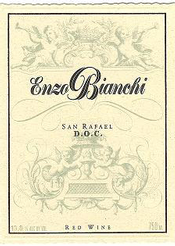 schooled in art history—winged, naked baby angels), and two of the Cherubs are actually blowing trumpets (not generally a harbinger of subtlety and restraint). schooled in art history—winged, naked baby angels), and two of the Cherubs are actually blowing trumpets (not generally a harbinger of subtlety and restraint).
Yet, get this wine into a glass and it shows outstanding class and complexity, with intricate aromas, layered flavors, subtle oak, and moderate alcohol. The blend offers some insight into the wine’s performance: 75% Cabernet Sauvignon, 10% Cabernet Franc, 8% Petit Verdot and 7% Malbec. Everybody is supposed to salute Malbec as Argentina’s best variety, and at lower price levels it often is, but I find that Cabernet shows more structure and less gooey ripeness. Despite the fact that I was against this from the start based looks alone, I absolutely loved the wine, which out-performs “statement wines” from Argentina costing twice as much. 95 Points
Posted by Michael Franz at 9:37 AM
|
|
December 14, 2016
Norwegian entrepreneur Alexander Vik embarked in 2004 on an effort to make a truly great wine in South America, searching for a superb site and searching with the best viticultural team he could hire. He settled on a 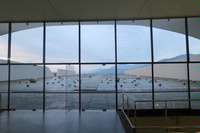 location two years later, buying … an entire valley. I have never met the man, but I did see the place last year, and I can say with certainty that he doesn’t mess around. Along with his wife, Carrie, Vik has built an eye-popping enterprise on more than 10,000 acres roughly 2 hours south of Santiago in Chile. The spectacular vineyard, winery, lodging and restaurant are set in the Millahue Valley, or “Place of Gold”, as named by the indigenous people. location two years later, buying … an entire valley. I have never met the man, but I did see the place last year, and I can say with certainty that he doesn’t mess around. Along with his wife, Carrie, Vik has built an eye-popping enterprise on more than 10,000 acres roughly 2 hours south of Santiago in Chile. The spectacular vineyard, winery, lodging and restaurant are set in the Millahue Valley, or “Place of Gold”, as named by the indigenous people.
Now that we’ve worked the word “gold” into this account, I’m obliged as a journalist to acknowledge that almost anybody can produce something striking if they’ve got sufficient funds. However, not just anybody can create a genuinely distinctive and beautiful (as opposed to ostentatious) 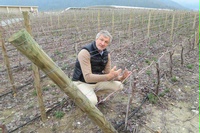 winery and hotel. Moreover, not just anybody can set up a vineyard that makes downright great wine from the very start, and the French would tell you that it is impossible to make a great wine with vines planted for less than multiple decades. Well, one Frenchman in particular, Bordeaux-born Patrick Valette, has proved this wrong, and the 2011 release he has wrought along with winemaking partner Christian Vallejo proves the point absolutely convincingly. I’ll be writing more on Viña Vik in the coming year, as there’s much to be learned by examining just how this winery and vineyard got so good so fast. But for now, let’s just focus on the flagship wine: winery and hotel. Moreover, not just anybody can set up a vineyard that makes downright great wine from the very start, and the French would tell you that it is impossible to make a great wine with vines planted for less than multiple decades. Well, one Frenchman in particular, Bordeaux-born Patrick Valette, has proved this wrong, and the 2011 release he has wrought along with winemaking partner Christian Vallejo proves the point absolutely convincingly. I’ll be writing more on Viña Vik in the coming year, as there’s much to be learned by examining just how this winery and vineyard got so good so fast. But for now, let’s just focus on the flagship wine:
Viña Vik, Millahue, Cachapoal Valley, Chile 2011 ($150): This is just the third release of this wine, made from extremely young fruit, but it already shows a mind-boggling level of complexity and class. Blended from Cabernet Sauvignon (55%), Carménère (29%), Cabernet Franc (7%), 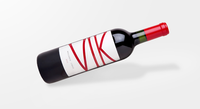 Merlot (7%) and Syrah (4%), it shows beautiful and deep color extending all the way to the edge of a slanted glass. Balanced scents of fruit and subtly toasty oak are very alluring, with savory accents beginning to emerge in the aromas and flavors. Acidity, tannin and wood are all quite notable, but they present themselves very proportionally, and these structural elements leave center stage to the gorgeous fruit. This will unwind additional complexities for years to come, but is already a totally convincing wine. Tasted multiple times (including in a blind tasting alongside a sizeable set of Chile’s most eminent wines), I’ve consistently rated this at: 96 Merlot (7%) and Syrah (4%), it shows beautiful and deep color extending all the way to the edge of a slanted glass. Balanced scents of fruit and subtly toasty oak are very alluring, with savory accents beginning to emerge in the aromas and flavors. Acidity, tannin and wood are all quite notable, but they present themselves very proportionally, and these structural elements leave center stage to the gorgeous fruit. This will unwind additional complexities for years to come, but is already a totally convincing wine. Tasted multiple times (including in a blind tasting alongside a sizeable set of Chile’s most eminent wines), I’ve consistently rated this at: 96
Posted by Michael Franz at 4:06 PM
|
|
December 3, 2016
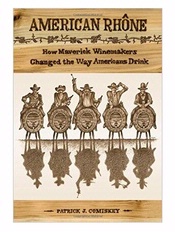 I am old enough to remember when Syrah was going to be the next big thing on the American wine scene. And not just Syrah but Viognier, Roussanne, Marsanne, Grenache, Grenache Blanc, et al. These are the so-called Rhône-style wines championed by contrarian American winemakers attempting to break away from the crowded field that occupied the high ground of Cabernet Sauvignon and Chardonnay, America's two most popular wines. I am old enough to remember when Syrah was going to be the next big thing on the American wine scene. And not just Syrah but Viognier, Roussanne, Marsanne, Grenache, Grenache Blanc, et al. These are the so-called Rhône-style wines championed by contrarian American winemakers attempting to break away from the crowded field that occupied the high ground of Cabernet Sauvignon and Chardonnay, America's two most popular wines.
It's hard to say who exactly led the way. Winemaker Gary Eberle, for example, brought syrah to California's Central Coast. Randall Grahm of Bonny Doon abandoned his passion to make world-class Pinot Noir to work the Rhône grape varieties that appeared to be better-suited to his climate and soil. Both found success that reverberated around the wine world. Grahm ended up on the cover of the popular wine publication the Wine Spectator, and other winemakers drawn to the Rhne movement -- Steve Edmunds and Sean Thackrey, to name just two -- basked in the glow. An organization called the Rhône Rangers was formed to promote the Rhone-style wines, and the Hospice du Rhône, a festival that draws winemakers and fans from around the world for tastings and seminars, blossomed in Paso Robles, California. Yet somewhere along the way, the Rhone movement lost its mojo. Much like Pinot Noir before the movie "Sideways," Syrah became a hard sell.
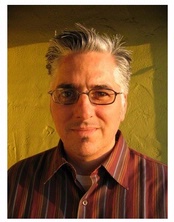 Journalist Patrick Comiskey, however, never lost his passion for either the true Rhône wines produced in the Rhône Valley in the south of France or the American Rhônes being made primarily in California and Washington. Comiskey, a writer and critic for Wine & Spirits magazine, has penned the definitive work on the Rhône movement, "American Rhône, How Maverick Winemakers Changed the Way Americans Drink." Journalist Patrick Comiskey, however, never lost his passion for either the true Rhône wines produced in the Rhône Valley in the south of France or the American Rhônes being made primarily in California and Washington. Comiskey, a writer and critic for Wine & Spirits magazine, has penned the definitive work on the Rhône movement, "American Rhône, How Maverick Winemakers Changed the Way Americans Drink."
Comiskey, a gifted writer and storyteller, spent the better part of six years -- by his estimation -- researching the topic, conducting interviews, tasting the wines and eventually writing the book. With an exceptionally good eye for nuance, Comiskey is at his best when depicting the range of personalities -- many, if not most, of them eclectic -- who have put their stamp on the American Rhône movement. My only quibble with the book is the subhead on the cover. The American Rhône movement has stalled and seems to be in need of a spark. Could he be that spark?
Whether a fan of Rhône wines or not, "American Rhône" is an entertaining and educational read. It might even inspire devotees of Cabernet and Chardonnay to give the American Rhônes another shot.
Posted by Robert Whitley at 10:37 AM
|
|
 |
|